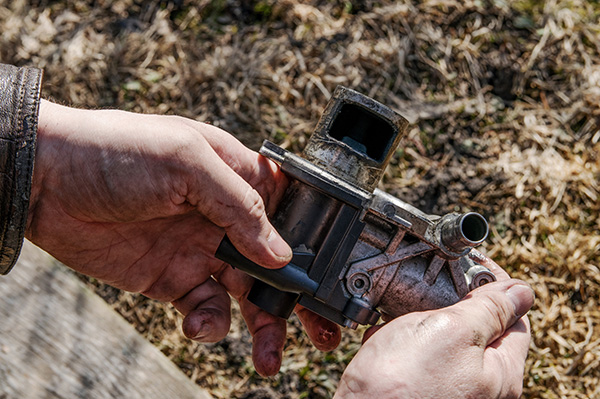
Your car’s oxygen sensor helps control how much fuel the engine burns. It measures the amount of oxygen in the exhaust and tells the engine’s computer whether to add more fuel or cut it back. If this sensor stops working, the engine can’t adjust properly. That often leads to poor fuel economy, higher emissions, and sluggish performance.
Oxygen sensor failure is one of the most common reasons a check engine light turns on, and ignoring it can lead to much bigger issues.
How the Oxygen Sensor Works
Your engine needs a balanced air-fuel mixture to run efficiently. If there is too much fuel or not enough air, combustion becomes inefficient. The oxygen sensor helps regulate this balance by analyzing how much oxygen is present in the exhaust gas.
There are usually one or more oxygen sensors located in or near the exhaust manifold and another downstream of the catalytic converter. Together, they help the engine adjust fuel delivery and monitor emissions control.
Common Symptoms of a Failing Oxygen Sensor
A bad oxygen sensor doesn’t always make itself obvious, but these are common warning signs:
- Decreased fuel efficiency
- Rough idle or hesitation
- Check engine light illuminated
- Failed emissions test
- Increased exhaust emissions
If you’ve noticed that your fuel mileage is getting worse, or your vehicle smells like fuel after starting, the oxygen sensor could be to blame.
Why Fuel Economy Suffers
When the oxygen sensor stops sending accurate readings, your car’s engine computer may default to a richer fuel mixture. This means more fuel is being used than necessary. Over time, this can add up to significant fuel waste, especially during city driving or cold starts.
Inaccurate sensor data may also cause the engine to hesitate, stall, or misfire. You might find the vehicle less responsive when accelerating or idling roughly at stoplights.
How It Affects Your Catalytic Converter
One of the more serious problems caused by a faulty oxygen sensor is damage to your catalytic converter. If the engine burns too much fuel, unburned fuel can enter the exhaust system. This can overheat and damage the catalytic converter, which is expensive to replace.
Replacing a worn-out oxygen sensor early can help prevent this kind of secondary damage and save you hundreds of dollars in repair costs.
How to Confirm the Problem
If the check engine light is on, the technician can use a diagnostic scanner to retrieve the trouble codes stored in the vehicle’s computer. Codes like P0130 or P0171 often point to oxygen sensor issues. A proper diagnostic test will confirm whether the sensor itself is bad or if there is another issue affecting its function, such as a vacuum leak or a wiring fault.
Technicians may also use live data from the sensor to confirm it is not switching or reacting the way it should. If the readings stay fixed or respond slowly to changes, the sensor is likely due for replacement.
When to Replace Your Oxygen Sensor
Most oxygen sensors are designed to last between 60,000 and 100,000 miles. If your vehicle is approaching this mileage and you’ve never had the sensors replaced, it may be time to have them inspected.
Even if there are no symptoms yet, preventative replacement can improve fuel economy and reduce emissions. Some vehicles have multiple sensors, so a technician will identify which one is faulty if the system sets a trouble code.
Can You Keep Driving With a Bad Oxygen Sensor
In many cases, your car will still run with a bad oxygen sensor, but not efficiently. You’ll likely use more fuel, produce more emissions, and risk damage to the catalytic converter over time. If the check engine light is flashing or you notice significant performance issues, it’s best to stop driving and get the vehicle inspected immediately.
For minor symptoms, schedule service soon and avoid putting off repairs. The longer you drive with a failing sensor, the more likely it is to cause additional problems.
Have Your Oxygen Sensor Inspected at Kwik Kar Auto Repair Belt Line in Richardson, TX
If your check engine light is on or you’ve noticed fuel economy getting worse, visit Kwik Kar Auto Repair Belt Line in Richardson, TX. Our experienced technicians will conduct a comprehensive diagnostic test, inspect your oxygen sensors, and replace any faulty components with high-quality parts. Don’t let a small sensor lead to major repairs.
Schedule your inspection today and keep your vehicle running clean and efficient.